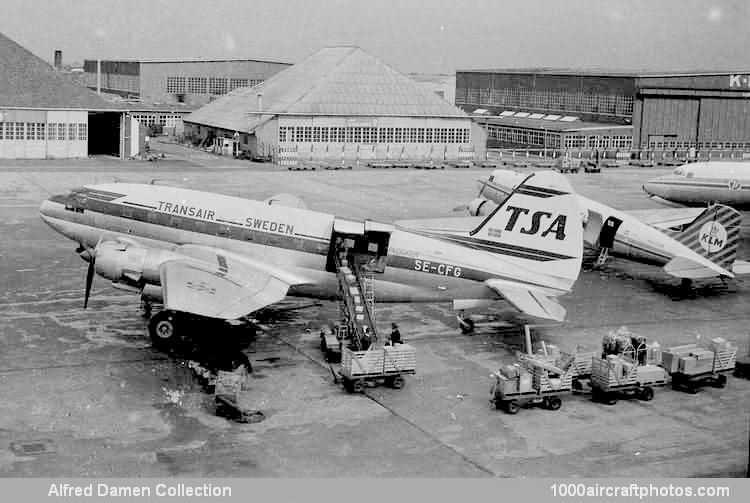08/31/2006. Remarks by Jack McKillop: "This aircraft was delivered to the USAAF on December 6, 1943 as a C-46A-30-CU, s/n 43-3577. It was transferred to the US Navy 13-days later as an R5C-1, BuNo. 39523 and assigned to the USMC. During WW II, the aircraft served with VMR-252 (Marine Transport Squadron 252), VMR-952 and VMR-953.
After the war, the aircraft served with numerous units until sold to L.B. Smith Aircraft Corporation and registered N4095A. This company specialized in converting C-46s and this one was converted to a CW-20T Super 46C. The conversion consisted of about 30 airframe and engine improvements the most important being the improvement in engine cooling.
In 1959, it was sold to Associated Air Transport of Miami, Florida, USA, and registered N46X. The aircraft was damaged on August 6, 1958 when it overran an embankment when landing at Cheyenne, Wyoming, USA. This Super 46C was repaired and sold to Modern Air Transport of Trenton, New Jersey, USA, in 1960 and used for passenger and cargo charters in the USA.
In March 1961, it was sold to Transair Sweden AB, of Malmo, Sweden, and registered SE-CFG. It was leased to the United Nations (UN) on December 13, 1964 and used to provide contract transport for the UN in the Belgian Congo. The aircraft was damaged beyond repair in a heavy landing at Stanleyville, Belgian Congo, on March 6, 1966 and sold for scrap. At the time of the crash, it had 11,271 hours on the airframe."
12/31/2004. Remarks by Alfred Damen: "The picture shows SE-CFG owned and operated by Transair of Sweden on cargo runs between Malmö Bulltofta airport and Amsterdam - the cargo being loaded the old (and hard) way, manhandling each and every package into position in the cabin. As you can see the weather was wet so I wonder about the condition of the cargo - whatever it was - when it arrived in Sweden. This area was a small extra stretch of concrete adjoining the main platform and framed by some pre WW II hangars."
Read the type remarks on page 9966.
